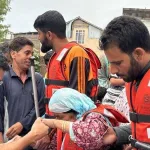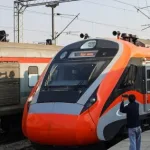BEYOND THE STETHOSCOPE
With millions of deaths every year, cardiovascular illnesses have long been a serious global health issue. Medical practitioners always look for novel approaches to enhance diagnosis and treatment to combat this. Precision imaging in cardiology has been made possible by Radiodiagnosis, one of the most important developments in contemporary medicine. Modern imaging tools have completely changed how cardiac diseases are identified and treated, promising improved results and better patient care.
Computed Tomography Angiography (CTA): Understanding the Heart’s Complexity
For the purpose of diagnosing coronary artery disease and finding blockages, it is essential in the field of cardiology to precisely see the blood channels of the heart. For this aim, Computed Tomography Angiography (CTA) has become a potent technique. Cardiologists can detect stenosis and plaques with exceptional precision thanks to CTA’s precise, three-dimensional pictures of the coronary arteries. The innovative fractional flow reserve (FFR-CT) study also enables non-invasive functional significance assessment, providing informed judgments regarding revascularization operations. I am delighted and proud to announce that at our center in GMC Anantnag, we regularly conduct Cardiac CTA with great proficiency, helping the patients in better cardiac disease management.
Magnetic Resonance Imaging (MRI) of the Heart: A Groundbreaking Functional Assessment
Functional assessment in cardiology has been revolutionized by cardiac magnetic resonance imaging (MRI). This non-invasive method provides accurate measurements of the ventricular volumes, ejection fraction, and irregularities in local wall motion, providing thorough insights into heart structure and function. Cardiologists can detect myocardial fibrosis, edema, and inflammation using MRI’s myocardial tissue characterisation techniques, such as T1 and T2 mapping, which are crucial for identifying cardiomyopathies and myocarditis.
Positron Emission Tomography (PET): A Window into the Heart’s Metabolism
Positron Emission Tomography (PET) is at the forefront of the search for precise imaging. PET imaging makes it easier to assess myocardial perfusion, viability, and metabolism by using radiotracers. This helps cardiologists to accurately diagnose difficult illnesses like cardiac sarcoidosis and infective endocarditis and to make judgements about revascularization following myocardial infarction.
Echocardiography and Strain Imaging – Real-time Insights into Cardiac Function
With its ability to image heart architecture and function in real time, echocardiography is still a crucial technique in cardiology. Within this field, strain imaging has become a cutting-edge method that enables doctors to measure myocardial deformation and spot subclinical myocardial disease. The early identification offered by strain imaging enables medical personnel to launch prompt treatment interventions, preventing the progression of cardiac disease.
Enhancing Surgical Planning Through 3D Printing and Image Fusion
The development of personalized surgical planning has been aided by developments in radiology. Patient-specific cardiac models can be produced using image fusion and 3D printing technologies. In order to perform precise and least invasive surgeries, these models enable clinicians to preoperatively evaluate intricate cardiac abnormalities and subtleties. New avenues in the treatment of difficult cardiovascular problems are opened by this amazing synergy between radiology and cardiology.
The cardiac care has been changed by the constant pursuit of high quality diagnostic imaging in radiology. Utilizing cutting-edge tools like CTA, MRI, PET, echocardiography, and 3D printing, doctors can now diagnose heart diseases with unmatched accuracy and create treatment programmes that are specific to the needs of each patient. As the areas of radiology and cardiology continue to converge, we stand witness the change of cardiovascular care, giving fresh hope and better outcomes to countless people batting the deadly heart disease.
(Author is a Radiodiagnosis student at Government Medical College, Anantnag and a researcher in precision oncology)





